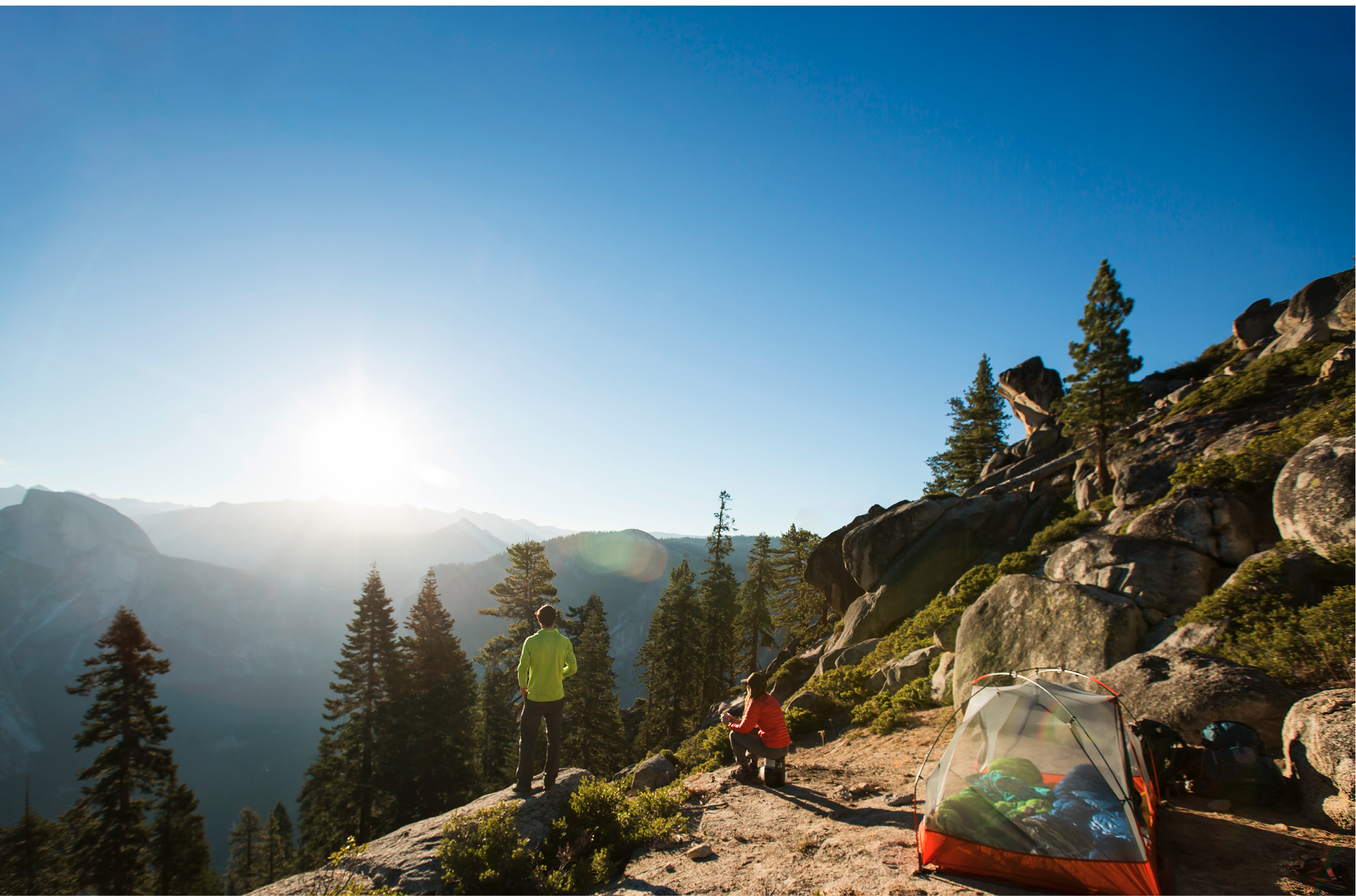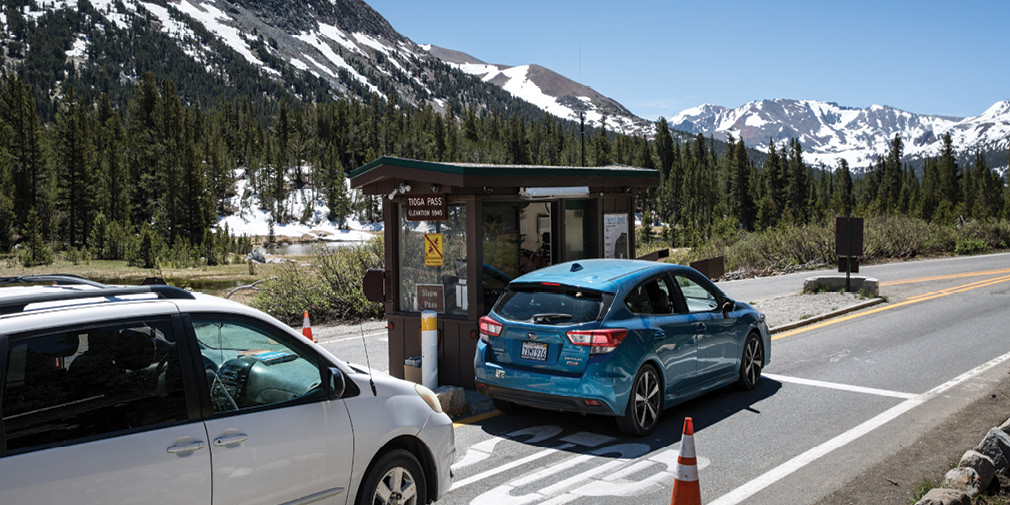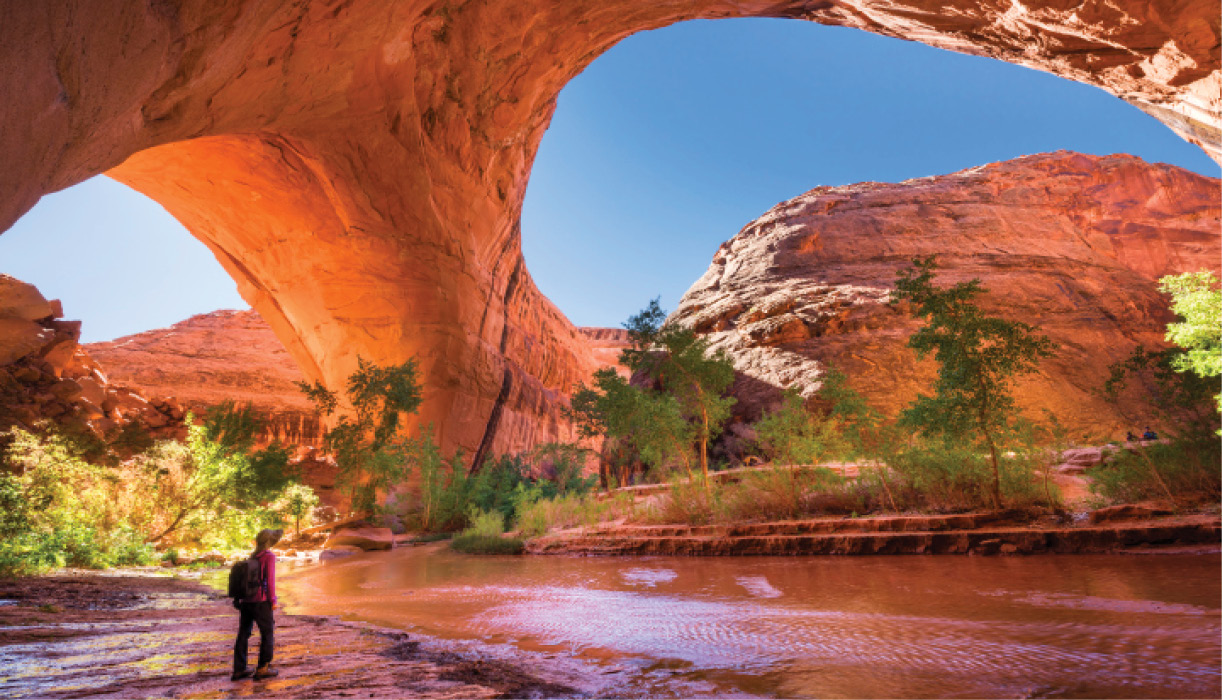By Matt Wastradowski
If you’ve tried planning a road trip, booking a campsite at your favorite state park, or visiting a national park in recent years, you’ve likely noticed the process has been more cumbersome than it might have been a few years ago.
And it’s true: While many of our public lands experienced dips in visitation in 2020, they rebounded in the years since. In 2021, for instance, the National Park Service reported roughly 297 million visits to its more than 400 sites across the country. That was down from its pre-pandemic total of 328 million visits in 2019—but a massive increase from 237 million visits in 2020. Overwhelming visitorship has inspired parks across the West to implement timed-entry permits and take other steps to stop overcrowding—a trend that shows no sign of slowing.
The reasons for those high visitation numbers are many—and complex. The rise of remote work has allowed employees across the country to relocate to mountain towns and smaller communities. The nomadic van life remains an alluring option for some, and many people still feel safer with outdoor experiences than cramped indoor get-togethers. Whatever the case, the sheer volume of visitors competing for the same views can make it maddening to plan an excursion and see some of our nation’s public lands.
So as you hit the road and plan for outdoor adventure in 2023, here’s a guide to planning your next epic outing—from how to understand passes and permits, when to make reservations to how to make the most of a last-minute trip.
Understanding Passes, Permits and Admission Fees
Once you’ve settled on a destination and have some dates in mind, you’ll want to know which passes or permits may be required for visiting public lands, when they’re available and how to obtain them. Here’s how to navigate the different systems.
Understand the Land Manager: Every public land in the United States falls under the purview of a particular land manager—whether it’s a national forest (overseen by the U.S. Forest Service), national park or monument (run by the U.S. National Park Service), or even city and county parks (managed by local governments). Beyond finding clues in a park’s name (Smith Rock State Park, Yellowstone National Park, and so forth), the easiest way to tell what entity manages that land is by visiting a park’s official website.
Get the Skinny on What to Expect: Once you know which public land manager oversees a trail you’d like to hike, lake you’d like to paddle or park you’d like to visit, call or check with that land’s manager’s website as soon as possible to get the lowdown on fees, possible permits, on-sale dates and other helpful details with as much advance notice as possible.
National Park Permits: Some national parks have long- required advance registration for specific attractions. In recent years, several have instituted timed-entry reservation systems (on top of admission fees) for particularly busy areas and during peak visitation times. Colorado’s Rocky Mountain National Park, for instance, saw more than 4.6 million visitors in 2019—good for a 42 percent increase compared to the previous seven years—so it created timed-entry permits for the scenic Bear Lake corridor (where the elk rut slows traffic to a crawl in autumn) and the broader park. So if national parks appear on your bucket list, make sure to research whether you’ll have to make a reservation and when those windows open up—usually six months out.
Camping and Lodging Reservations
All those national parks that require timed-entry permits? They made that change because of heavy visitation—and those travelers need somewhere to spend the night. As you think about overnight accommodations, keep these tips in mind.

Start Looking Early: It may sound shocking, but the time to start planning overnight stays is now; in-park lodgings are available up to thirteen months out at Yellowstone National Park, and you can book in-park stays eleven months in advance at Glacier National Park. To give yourself the best possible chance at an in-park lodging, start looking one year in advance.
Nearby Stays: Cities near national parks and your favorite outdoor destinations are popular base camps, especially in midsummer. These outposts typically offer easy access to services (such as gas), cheaper overnight stays, and more restaurant options than what you’d find inside a park. Try making reservations six months out at choice lodgings to ensure your stay.
Campground Considerations: Tent campers and RV enthusiasts alike have plenty of options for overnight stays across the West. When researching campgrounds, look at when the reservation window opens, which can vary wildly. Campgrounds managed by the Idaho Department of Parks and Recreation, for instance, typically begin accepting reservations nine months
out—but in national parks, campgrounds can often be booked a year out.
First-come, First-served Reservations: If your desired campground is full, it can’t hurt to do a bit more research to see whether it also has some sites that are available exclusively on a first-come, first-served basis (as some campgrounds in Oregon’s Mt. Hood National Forest do), or whether a nearby campground even accepts reservations (which is the case in several national parks and on land managed by the Bureau of Land Management).
Bureau of Land Management Camping: If you’re looking for an off-the-beaten-track overnight option, consider a campground managed by the Bureau of Land Management. These developed campgrounds, where amenities may include restrooms, drinking water, and hookups, don’t typically accept reservations but are rarely top of mind for travelers. This means that even at the height of summer, the handful of BLM campgrounds on the slopes of Steens Mountain in southeastern Oregon may not fill to capacity most nights. Find a nearby campground at blm.gov.
Making the Most of Last-Minute Adventures
Even if travel plans come together at the last minute, there are opportunities to explore. Here’s how:

Arrive Early to Campgrounds: Many campgrounds within national parks and national monuments are available exclusively on a first-come, first-served basis—and can fill to capacity by midmorning—so try to arrive as early in the day as possible. If your plans don’t allow for that, consider a private campground nearby (such as KOA), many of which don’t fill up nearly as fast, and which may offer swimming pools, on-site eateries and other amenities.
Last-minute Permits: If you’re visiting some of the Pacific Northwest’s most popular sites but didn’t secure permits or reservations when (or if) they went on sale months ago, don’t fret: last-minute options are more common than you might think. While tickets for boat tours at Crater Lake National Park may be available months in advance, for instance, a portion are saved for same-day bookings. If you’re hiking popular trails in some of Central Oregon’s most popular wilderness areas, you may need a Central Cascades Wilderness Permit at the height of summer; these are released on ten-day and
two-day rolling windows for last-minute hikers.

Visit Nearby National Monuments: National parks are created due to their stunning scenery and natural phenomena, and typically are higher profile in guidebooks and in travel blogs. However, national monuments showcase objects that have historic, prehistoric, or scientific value—helping you connect with a region’s broader history and geology. National monuments can be just as beautiful—and when crowds swell, a quick shift to national monuments often have fewer visitors and more space to spread out. The John Day Fossil Beds National Monument in Eastern Oregon, for instance, showcases colorful hillsides from roadside viewpoints, while Grand Staircase-Escalante National Monument in Utah brings together a variety of fascinating sites, from rock art panels left by the area’s first inhabitants to slot canyons and waterfalls.
Let AAA Help You Plan Your Trip
Download the AAA Mobile app for maps, discounts, restaurants, and lodging at AAA.com/mobile. For help planning your trip, find a local AAA Travel Agent or call AAA Travel at 800-529-3222.


